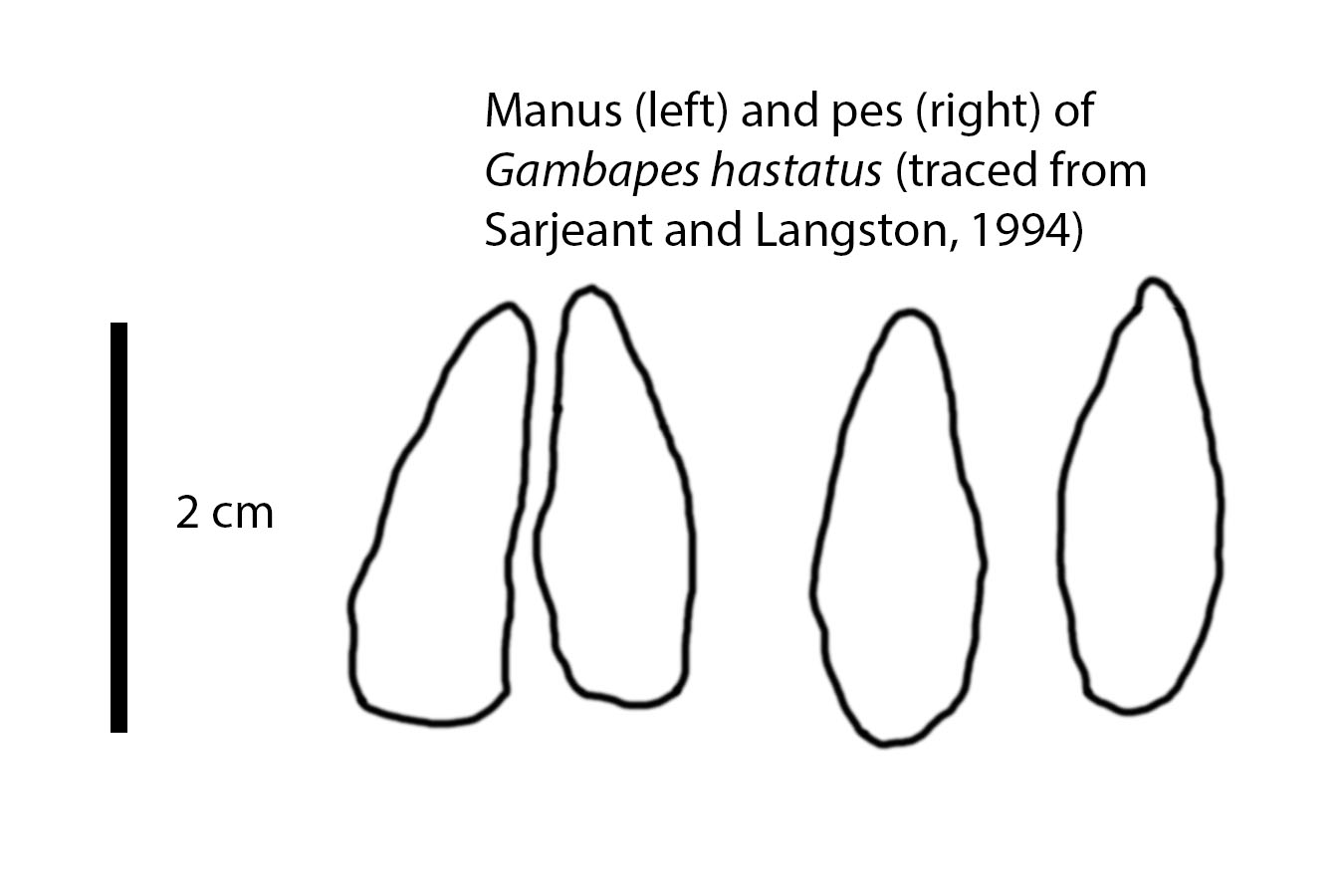Gambapes Sarjeant and Langston, 1994
JUNIOR SYNONYM(S): Pecoripeda satyri
DESCRIPTION: Tracks that are wedged shaped and have two main hooves in both the manus and pes. The medial hoof is digit II and the lateral hoof is digit IV. Sometimes, the hooves can make contact median or posteriorly but most of the time there is interdigital space separating them. The hooves are mirrored images of each other; they are broadest at the heel and end anteriorly in a sharp, parabolic curve. The apices of the hooves point forward and the axes is divergent, convergent or parallel depending on pace.
BEHAVIOR(S): Repichnia
ENVIRONMENTAL SETTINGS: Continental; terrestrial
POSSIBLE TRACEMAKERS: Animals with didactyl prints like camels, traguloids (deer-like animals), cervoids (deer) and bovoids. Williamson and Lucas (1996) however, hypothesize that their tracks were made by either a large antilocaprids (artiodactyls related to the pronghorn) or a primitive camelid due to the lack of dewclaw impressions.
GEOLOGIC RANGE: Upper Eocene–Miocene
ADDITIONAL REFERENCES: Williamson and Lucas, 1996
REMARKS:
